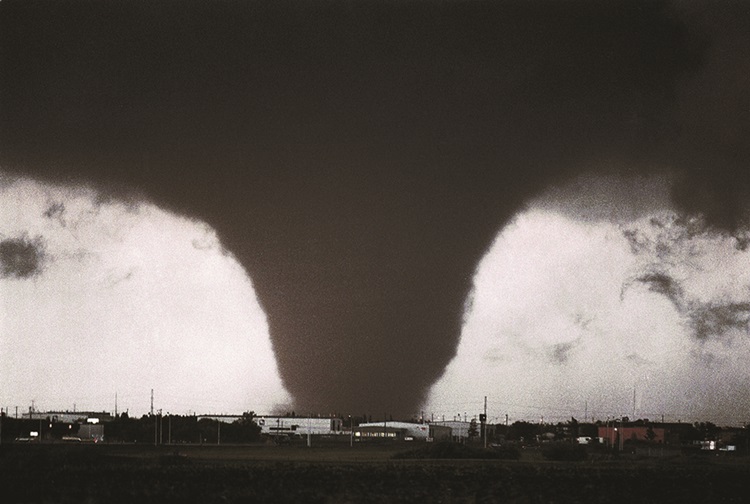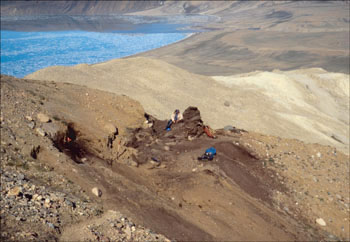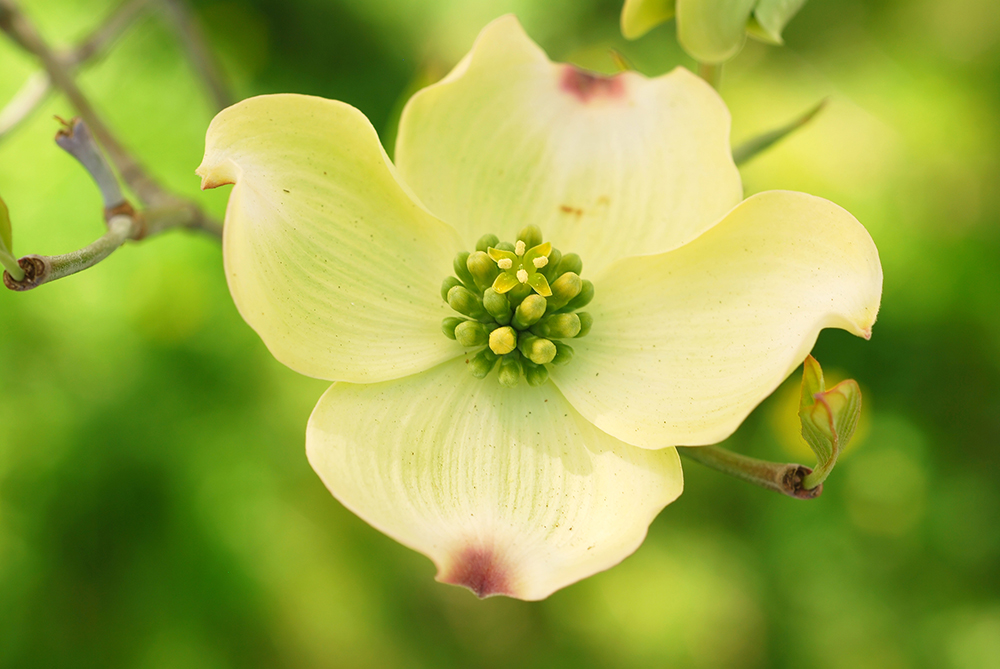Browse "Nature & Geography"
-
Article
Echinodermata
Echinodermata [Gk "spiny skin"], phylum of exclusively marine invertebrate animals. The 6000 known species occur from shores to greatest depths of all oceans.
"https://d2ttikhf7xbzbs.cloudfront.net/media/media/13013e6e-ff67-461b-a42c-416983fc0e43.jpg" // resources/views/front/categories/view.blade.php
https://d2ttikhf7xbzbs.cloudfront.net/media/media/13013e6e-ff67-461b-a42c-416983fc0e43.jpg
-
Article
Ecosystem
A limited space within which living beings interact with nonliving matter at a high level of interdependence to form an environmental unit is called an ecosystem.
"https://d2ttikhf7xbzbs.cloudfront.net/media/media/a900e05f-6cab-483c-98fb-d602ef1a44bd.jpg" // resources/views/front/categories/view.blade.php
https://d2ttikhf7xbzbs.cloudfront.net/media/media/a900e05f-6cab-483c-98fb-d602ef1a44bd.jpg
-
Article
Edmonton Tornado (1987)
The Edmonton Tornado (also referred to as Black Friday) was an exceptionally powerful and devastating tornado that touched down at 2:55 p.m. Mountain Time (MT) on Friday, 31 July 1987. The tornado struck the eastern edge of Edmonton, Alberta, and parts of neighbouring Strathcona County. It was categorized as an F4 tornado on the Fujita tornado measurement scale, corresponding to an EF4 on the Enhanced Fujita scale. It was the second deadliest tornado in Canadian history, after the Regina Cyclone of 1912, also rated F4. As of 2024, it is the deadliest and most destructive tornado in Alberta’s history, claiming 27 lives.
"https://d2ttikhf7xbzbs.cloudfront.net/edmontontornado1987/Edmonton_Tornado.jpg" // resources/views/front/categories/view.blade.php
https://d2ttikhf7xbzbs.cloudfront.net/edmontontornado1987/Edmonton_Tornado.jpg
-
Article
Edmontosaurus
Edmontosaurus is a genus of large, plant-eating, duckbilled dinosaur. There are two species of Edmontosaurus. One, E. regalis, lived between 73.1 and 69.6 million years ago in Alberta. The other, E. annectens, lived between 68 and 66 million years ago in Saskatchewan, Montana, North Dakota, South Dakota, and possibly Alberta. Edmontosaurus was one of the largest North American herbivores of its time and even surpassed Tyrannosaurus rex in size. The first specimen to be called Edmontosaurus was discovered in 1912 in the Drumheller area. It became the first mounted dinosaur skeleton on display in Canada.
"https://d2ttikhf7xbzbs.cloudfront.net/media/new_article_images/Edmontosaurus/EdmontosaurusRegalisResized.jpg" // resources/views/front/categories/view.blade.php
https://d2ttikhf7xbzbs.cloudfront.net/media/new_article_images/Edmontosaurus/EdmontosaurusRegalisResized.jpg
-
"https://d2ttikhf7xbzbs.cloudfront.net/media/media/1f049ea7-2e3b-459b-a914-552efd4f59e8.jpg" // resources/views/front/categories/view.blade.php
https://d2ttikhf7xbzbs.cloudfront.net/media/media/1f049ea7-2e3b-459b-a914-552efd4f59e8.jpg
-
Article
Eggplant
Eggplant (Solanum melongena var. esculentum), or aubergine, perennial herbaceous plant of the nightshade family.
"https://d2ttikhf7xbzbs.cloudfront.net/media/media/006404cb-0860-4d6d-ab1f-efcb18067a02.jpg" // resources/views/front/categories/view.blade.php
https://d2ttikhf7xbzbs.cloudfront.net/media/media/006404cb-0860-4d6d-ab1f-efcb18067a02.jpg
-
Article
El Niño
El Niño is a pronounced warming of the Pacific Ocean current off the coast of South America.
"https://development.thecanadianencyclopedia.ca/images/tce_placeholder.jpg?v=e9dca980c9bdb3aa11e832e7ea94f5d9" // resources/views/front/categories/view.blade.php
https://development.thecanadianencyclopedia.ca/images/tce_placeholder.jpg?v=e9dca980c9bdb3aa11e832e7ea94f5d9
-
Article
Elder
Elder, shrub of genus Sambucus, family Caprifoliaceae (honeysuckle). Elders grow up to 3 m high and spread to form thickets. About 20 species are known worldwide; 3 are native to Canada.
"https://d2ttikhf7xbzbs.cloudfront.net/media/media/0e03f876-f076-4da1-b276-9c2788b05c56.jpg" // resources/views/front/categories/view.blade.php
https://d2ttikhf7xbzbs.cloudfront.net/media/media/0e03f876-f076-4da1-b276-9c2788b05c56.jpg
-
Article
Ellesmere Island Eocene Fossils
Having been mapped on foot, by dogsled, and from the air by rugged geologists from the GEOLOGICAL SURVEY OF CANADA, the Canadian High Arctic was untouched by vertebrate palaeontologists until the mid-1970s.
"https://d2ttikhf7xbzbs.cloudfront.net/media/media/aad2c212-c087-43c4-8332-2d38b2f04f6d.jpg" // resources/views/front/categories/view.blade.php
https://d2ttikhf7xbzbs.cloudfront.net/media/media/aad2c212-c087-43c4-8332-2d38b2f04f6d.jpg
-
Article
Ellesmere Island Pliocene Fossils
Toward the close of the Tertiary (5 to 2 million years ago) and the beginning of the ice age (Quaternary - about 2 million years ago), a beaver pond existed on what is now Canada's Ellesmere Island, Nunavut.
"https://d2ttikhf7xbzbs.cloudfront.net/media/media/4bdc5be8-286b-4108-81c1-9602995884ad.jpg" // resources/views/front/categories/view.blade.php
https://d2ttikhf7xbzbs.cloudfront.net/media/media/4bdc5be8-286b-4108-81c1-9602995884ad.jpg
-
Article
Elm
Elm (Ulmus), genus of trees of elm family (Ulmaceae), found only in temperate regions of the Northern Hemisphere.
"https://development.thecanadianencyclopedia.ca/images/tce_placeholder.jpg?v=e9dca980c9bdb3aa11e832e7ea94f5d9" // resources/views/front/categories/view.blade.php
https://development.thecanadianencyclopedia.ca/images/tce_placeholder.jpg?v=e9dca980c9bdb3aa11e832e7ea94f5d9
-
Article
Endangered Animals in Canada
Many animals in Canada face the risk of extinction. Animals are put at risk for several reasons, including: climate change, the loss of forest and grassland to cities and agriculture, hunting, fishing, and the pollution of lakes and rivers. As of 2021, 554 animal species are at risk in Canada, according to the Committee on the Status of Endangered Wildlife in Canada. In addition, 18 are extirpated and 18 extinct. The committee’s definition of a wildlife species includes taxonomic categories as well as geographically distinct populations. For example, the beluga whale (Delphinapterus leucas) is included in the list of at risk animal species six times, as there are six different populations facing different threats to their survival. (See also Endangered Plants in Canada.)
"https://d2ttikhf7xbzbs.cloudfront.net/media/media/d94ee6d6-cf87-4001-9183-a07490901889.jpg" // resources/views/front/categories/view.blade.php
https://d2ttikhf7xbzbs.cloudfront.net/media/media/d94ee6d6-cf87-4001-9183-a07490901889.jpg
-
Article
Endangered Plants in Canada
A species is endangered if there are threats to its survival. Plants are put at risk for several reasons, including: climate change and the loss of natural habitat to cities, agriculture and industry. In Canada, these activities threaten entire natural ecosystems, such as older forests and Prairie grasslands. As of 2021, 250 plant species are at risk in Canada, according to the Committee on the Status of Endangered Wildlife in Canada. In addition, four are extirpated and one is extinct. The committee’s definition of a wildlife species includes taxonomic categories as well as geographically distinct populations. For example, the bent spike-rush (Eleocharis geniculate) is included on the list of at risk plant species twice, as there are two different populations, one in British Columbia and one in Ontario, facing different threats to their survival. (See also Endangered Animals in Canada.)
"https://d2ttikhf7xbzbs.cloudfront.net/media/media/387f5c8e-f2b5-4742-b30d-2a9832555b49.jpg" // resources/views/front/categories/view.blade.php
https://d2ttikhf7xbzbs.cloudfront.net/media/media/387f5c8e-f2b5-4742-b30d-2a9832555b49.jpg
-
Macleans
Endangered Species Protection
Grant Fahlman, 51, has lived his whole life on the farm 25 km southeast of Regina where his family settled when they came from Russia in 1889, and this year was the first in his memory that no burrowing owls raised their broods in his pasture.This article was originally published in Maclean's Magazine on December 20, 1999
"https://development.thecanadianencyclopedia.ca/images/tce_placeholder.jpg?v=e9dca980c9bdb3aa11e832e7ea94f5d9" // resources/views/front/categories/view.blade.php
https://development.thecanadianencyclopedia.ca/images/tce_placeholder.jpg?v=e9dca980c9bdb3aa11e832e7ea94f5d9
-
Article
Endive
Endive, or escarole (Cichorium endivia), herbaceous biennial vegetable belonging to the Compositae family.
"https://d2ttikhf7xbzbs.cloudfront.net/media/media/b76a7ecf-15b6-4b61-8247-8839122572cf.jpg" // resources/views/front/categories/view.blade.php
https://d2ttikhf7xbzbs.cloudfront.net/media/media/b76a7ecf-15b6-4b61-8247-8839122572cf.jpg
